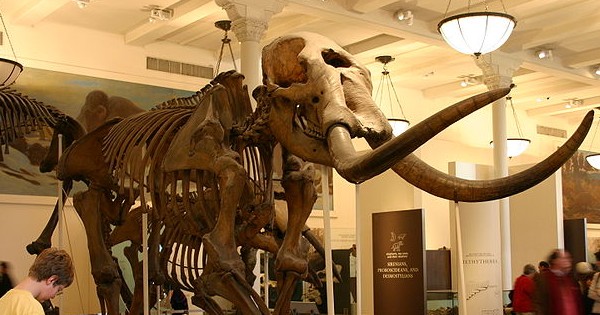
“Science as open inquiry and careful analysis of the real properties of the real world seems to us to still be the most powerful, honest, and collectively useful path to knowledge.” So wrote the late evolutionary biologist Lynn Margulis. She also wrote, “World-class science, in principle, is available to all people willing to observe and study regardless of social class, race, age, gender, nationality, or other divisive influence.” An interesting idea.
Open inquiry means, in part, being open to contrary evidence and even seeking out contrary evidence. But sometimes contrary evidence is suggestive but not really hard enough, and sometimes certain notions get entrenched while contrary notions get ignored, and sometimes the means to test the hardness of contrary evidence don’t yet exist. So scientists coming up with this contrary evidence may work in obscurity for decades, making the best of being ignored.
All of the above occurred in the case of the mastodon (Mammut americanum) bones unearthed in August 1977 in Sequim (pronounced Squim), on the Olympic Peninsula of Washington, by Emanuel Manis’s backhoe. Manny Manis was a bowling-alley owner. He and his wife, Clare, had been constructing a pond. The mind-boggling bone, which they figured to be a mammoth tusk, altered their lives irrevocably. They got excited and began calling around. One person who answered their call was a 41-year-old Washington State University archeologist, Carl Gustafson. He jumped in a truck and drove across the state to Sequim and began excavating. The bones were not mammoth but mastodon. Almost immediately Gustafson discovered a rib pierced by an “osseous” (bone) object, a distinctly spear-point-looking type thing. But spear means human and human was, according to then-conventional scientific wisdom, impossible. It was impossible because the first people in North America, the Clovis people, would not arrive for another 800 years. So there.
Clovis people are so called because of distinctively worked stone spear-points found at their sites (first discovered in Clovis, N. M., but also found in Washington state, near Wenatchee), which date, at earliest, to 13,000 years ago. Clovis points are fluted on both sides. The people hunted mammoths and other big animals. They are said to have crossed into Alaska from Siberia on the grassland known as Beringia, now submerged by the Bering Strait.
But what if people were here a thousand years before the Clovis people arrived? What if the Clovis people, rather than arriving, developed out of this earlier-arriving population? What if the bone spear-points of these earlier people developed into the stone spear-points of Clovis people? What if earlier people traveled down the Pacific Coast, as pre-Clovis sites in central Texas and in Monte Verde, Chile, seem to suggest?
Archaeologist Michael Waters and his team, working in the pre-Clovis Buttermilk Creek complex in central Texas, became interested in Carl Gustafson’s mastodon. By then, decades had passed; Gustafson had retired. The man was discouraged, perhaps a tad bitter. But DNA sequencing had arrived and scanning techniques had improved. Waters had Gustafson’s pierced mastodon rib tested and retested. Almost certainly, as it turned out, the sharp-pointed bone embedded in the mastodon rib was an earlier-than-Clovis bone spear-point. Gustafson’s contrary evidence becomes evidence for a revision of the vision of the first Americans.
Is civic pride still allowed? We in Washington state are quite proud of our mastodon site at Sequim. And we’re grateful to Manny and Clare Manis, who could have dumped the bones and kept on digging the pond. We’re grateful to Carl Gustafson, who soldiered on, searching for answers. In the end, science wins out. And that matters to us all.

